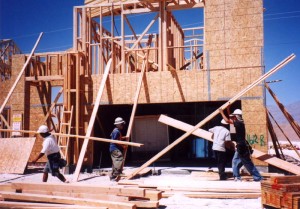The Monday Morning Quarterback / A quick analysis of important economic data released over the past week
Elliott D. Pollack & Co.
In Arizona, total retail sales were up. Home listings in Greater Phoenix were down. New home sales between mid-June and mid-July bucked to seasonal trend and were up sharply. Existing home prices were up more than new home prices so the ratio of median new to existing home prices continued to decline. This is a positive for new homebuilders. More detail below.
Arizona Snapshot
According to Jim Belfiore, new home sales defied the seasonal trend and grew by 43% between mid-June and mid-July. This is good news for homebuilders.
Total Arizona TPT retail sales were up 9.1% over a year ago last month.
June home listings in Greater Phoenix (according to the Cromford report) were 24,441 in June compared to 25,929 in May and 28,885 a year ago. The market continues to tighten.
June prices for the median priced resale home were $214,900 compared to $213,000 in May and $198,000 a year ago. New home prices have remained at the lower end of the range since early 2008.
The ratio of median new home prices to median resale home prices in Greater Phoenix was down to 144%. This is the lowest ratio since 2008 and down from a 2011 peak of over 200%. The normal range is between 120%-125%. Things are moving in the right direction.
Single-family listings in Greater Tucson were 4,061 in June compared to 4,267 in May and 4,249 a year ago.
The big news last week was really on the international front. The risk of Greece leaving the Eurozone was averted as European leaders reached a unanimous bailout deal. The total rescue effort could amount to as much as 86 billion euros (96 billion U.S. dollars) in bailout funds over the next three years. The package is significantly more than Greece’s initial request as the banking shutdown of the past two weeks choked their economy, exacerbating what already was the deepest recession of any developed nation since World War II. The bailout is conditioned on Greece passing agreed reforms that include pension overhauls and sales tax increases that voters overwhelmingly rejected in a referendum just one week ago. But, regardless of how this plays out for Greece, a country that is less than twice the size (in population) of Arizona, it is not likely to create major international problems for the U.S. economy.
The bigger issue is China, the world’s second largest economy. The 33% decline in the Hong Kong stock market since October is a symptom, not a cause, of economic problems in China. It could, if left unchecked, create significant international issues. (By the way, the decline has wiped out the 50% gain in the Hong Kong market since January.) The decline has affected investor/consumer confidence, the ability for companies to raise money in the market, has brought into question the Chinese government’s ability to control the market and has destroyed equity of small and medium sized investors through declines and margin calls.
The problem is that Chinese growth has been based on an export led growth model that has relied on external demand and high internal investment. They now have all the ghost cities they can use and have as much new capacity in industries like cement and steel as they need. They need to shift to a more balanced consumption/investment model. The ability to do this was hurt by the decline in the market. It is symptomatic of a debt bubble. It will take time to fix. Where this goes remains to be seen, but, it needs to be followed closely. For now, international investors have been somewhat shielded by the restrictions on foreign investment in the Chinese stock market.
As for last weeks’ domestic economic news, credit use was up, but, this still seems to be under control. Non-manufacturing business continued to expand and mortgage rates remain near 4%.
U.S. Snapshot:
Consumer credit grew by 0.5% in May (a 5.7% annual rate) and, as of May, stood 6.5% over a year ago. As was expected, non-revolving credit (mainly auto and student loan debt) was up at a 7.0% annual rate and stood 7.8% over a year ago. Revolving credit, mainly credit card debt, was up at a much lower 2.1% annual rate and stood 3.2% over a year ago. Revolving credit is still well below its 2008 previous high.
The ISM non-manufacturing index stood at 56.0 in June. This compared to 55.7 in May and 56.3 a year ago. Any reading of above 50 suggests that the non-manufacturing economy is expanding.
30 year fixed rate mortgages stood at 4.04% last week compared to 4.08% the previous week and 4.15% a year ago.













